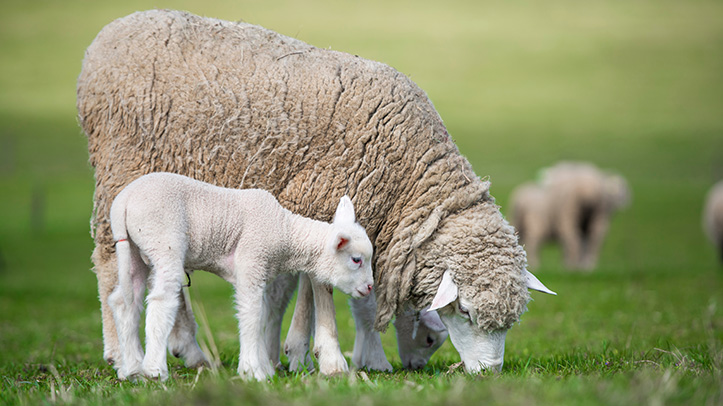The Sustainable Control of Parasites in Sheep (SCOPS) group is encouraging sheep farmers to use the monitoring of ewe body condition score as a practical step to significantly reduce how many doses of wormer are administered this lambing season.
The group says new evidence supports this approach as a way to cut the proportion of ewes wormed around lambing time, without detrimental effects on lamb performance, allowing producers to adjust their approach at this time of year.
Speaking on behalf of SCOPS, independent sheep consultant Lesley Stubbings said: “Under the stress of late pregnancy, a ewe’s immune system can wane, allowing adult worms in her gut to produce more eggs. This is known as the peri-parturient rise and the worm eggs, passed out in the ewe’s dung, contaminate the pasture grazed by their lambs later in the season.
“The objective of using a wormer at lambing time is to reduce the level of pasture contamination and the subsequent challenge to lambs. It normally has nothing to do with the health of the ewe.”
The problem is that worming all ewes at lambing time in the hope of reducing the risk to their offspring is high-risk in terms of accelerating the development of resistance to wormers on a farm. Reducing the proportion of ewes wormed reduces this risk and helps slow the development of resistance.
Ms Stubbings continued: “For some years, SCOPS has recommended at least one in 10 of the fittest ewes are left untreated to reduce the selection for resistance in the worm population. However, as resistance levels increase, we need to better identify those ewes likely to produce the highest level of contamination and when this if likely to occur, so treatment can be timed more accurately.”
Ms Stubbings said SCOPS has been watching with interest a research project in Wales that has shown a significant variation in the extent, timing and duration of the peri-parturient rise, both between individual ewes and between farms.
Nutritional stress, measured as a loss of body condition score (BCS), was the key to establishing which ewes had the highest faecal egg count (FEC) and when this occurred relative to lambing.
Ms Stubbings said: “This latest research suggests, rather than just leaving the fittest or single rearing ewes untreated, you can use loss of body condition in your ewes to identify those under the most nutritional stress and therefore more likely to produce a high number of worm eggs in their dung.
“In most flocks this means the proportion treated can be reduced. This is critical to address concerns over the blanket use of long-acting moxidectin 2% wormers in ewes.
“While these products reduce egg output over an extended period, and therefore can reduce pasture contamination, they also mean the worm population is exposed to the active for longer. Taking this new approach means we can target only those ewes likely to produce the most contamination, harnessing the potential of moxidectin while ensuring minimum selection pressure is exerted.”
Kevin Harrison, a sheep farmer on the Gloucestershire/Somerset border, is the chairman of the SCOPS Steering Group.
He said: “As the incidence of anthelmintic resistance continues to increase across UK sheep farms, the need to use wormers only when necessary is becoming more and more important.
“A better understanding of why and when we worm ewes and targeting treatment to ewes based on reduced body condition score is a really practical recommendation and a positive step all producers can take. In our flock we have drastically reduced the number of ewes we worm in recent years, without any detriment to the lambs, and of course we have also saved money. I urge other producers to consider taking steps to reduce wormer use in their ewes this spring.”


